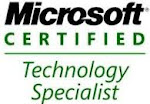We can configure digest authentication in SharePoint web
application zones. Zones are the logical paths for access to a web application.
We can create five different zones for each web application in SharePoint. We
can use IIS Manager Console to configure digest authentication one or more zones
in SharePoint web application.
Digest authentication encrypts user credentials to increase
the security. We can send user credentials in MD5 message digest. Digest
authentication will use challenge/response protocol for authentication process.
To authenticate the use client needs to send MD5 message digest in a response
contains secret password string.
To configure digest authentication,
Go to IIS Manager (Run -> Inetmgr) and Expand Sites node and select the web application to
configure digest authentication In features view double click on the authentication located
in IIS section
Right click on the digest authentication and select enable
option to enable digest authentication in Authentication section.
Right click on digest authentication and select edit option
to provide Realm value. We have to provide Realm value as IPAddress of the DNS
domain that uses the credentials for authentication against internal domain.






